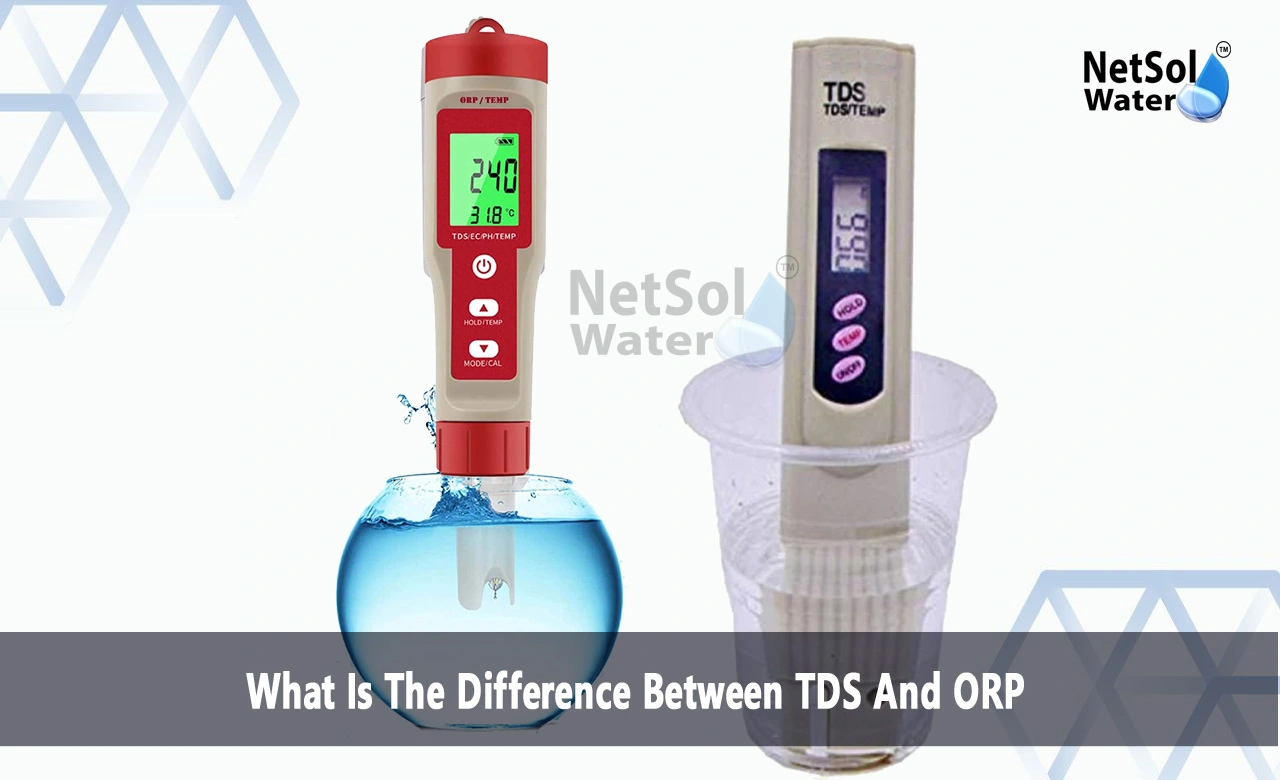What Is The Difference Between TDS And ORP?
Water quality testing employs multiple methods to confirm water safety. Total Dissolved Solids (TDS) and Oxidation-Reduction Potential (ORP) emerge as two essential measurements in water treatment. These distinct parameters work to create a comprehensive understanding of water quality. Water treatment professionals across the globe use TDS and ORP to maintain water safety standards effectively.
The quality of water directly affects our daily lives. Water treatment facilities swimming pool operators and homeowners need to monitor these measurements consistently. TDS reveals the concentration of dissolved substances in water. ORP indicates the water's self-cleaning capabilities. Water treatment experts combine these measurements to ensure water meets all safety requirements.
We will examines how TDS and ORP function their measurement processes and their significance in water quality assessment. You will discover the unique roles these parameters play in water treatment the various testing approaches and their impact on water safety.
Total Dissolved Solids (TDS)
TDS measurements reveal the invisible elements present in water. This parameter captures every dissolved substance including minerals salts and metals in water. TDS works like a detailed inventory system that counts all dissolved materials similar to how sugar becomes part of your tea when it dissolves.Let's examine the key aspects of TDS:
What TDS Actually Measures?
TDS encompasses all dissolved organic and inorganic materials in water. The measurement includes:
· Calcium and magnesium which create hard water
· Sodium that comes from water softening processes
· Potassium found in natural water sources
· Iron that enters from pipes or ground sources
· Chlorides used in treatment processes
TDS Testing Methods
Water treatment professionals employ various techniques to determine TDS levels. A TDS meter passes an electrical current through water to obtain readings. Clean water resists electrical flow. The presence of dissolved solids increases electrical conductivity. The meter translates conductivity measurements into TDS values.
Impact of TDS on Water Quality
TDS levels significantly influence water characteristics. High TDS creates distinct tastes ranging from metallic to salty or bitter. It causes spotting on glassware and dishes after washing. The presence of elevated TDS often signals water quality issues that demand immediate attention.
Acceptable TDS Ranges
Different applications require specific TDS ranges:
· Drinking water must maintain TDS below 500 parts per million (ppm)
· Industrial applications often demand lower TDS concentrations
· Swimming pools function optimally with TDS between 1000 to 2000 ppm
Oxidation-Reduction Potential (ORP)
ORP demonstrates water's capability to eliminate contaminants and destroy harmful organisms. This measurement guides water treatment professionals in maintaining appropriate disinfection levels. ORP indicates the strength of water to oxidize or reduce other substances.Let's explore ORP thoroughly:
How ORP Works?
ORP provides electrical potential readings in millivolts (mV). These measurements show water's ability to:
· Destroy contaminants
· Eliminate bacteria and other organisms
· Clean unwanted elements from water
ORP Testing Equipment
Professionals utilize ORP sensors to monitor water quality. These devices measure electrical potential differences between reference and measuring electrodes. The readings display the oxidizing or reducing strength of water.
ORP in Different Applications
· Swimming pools maintain ORP between 650-750 mV for effective sanitization
· Drinking water facilities track ORP to confirm proper disinfection
· Industrial processes monitor ORP to adjust chemical treatments
Key Differences Between TDS and ORP
These measurements fulfill distinct roles in water treatment. Understanding their unique characteristics enables more effective water management.
Purpose and Function
TDS quantifies dissolved materials in water. It provides exact measurements of dissolved substances. ORP measures sanitization effectiveness. It shows water's ability to eliminate contaminants and harmful organisms.
Measurement Units
· TDS values appear in parts per million (ppm) or milligrams per litre (mg/L)
· ORP readings display in millivolts (mV)
Treatment Applications
· TDS guides professionals to:
· Determine filter replacement timing
· Assess water softening needs
· Evaluate reverse osmosis requirements
ORP helps professionals:
· Adjust chlorine levels in pools
· Monitor disinfection effectiveness
· Control chemical treatment processes
Interrelation in Water Treatment
TDS and ORP measurements complement each other in water treatment processes. High TDS can affect ORP measurement accuracy. Water treatment professionals consider both parameters when implementing treatment strategies.
Take Action for Better Water Quality
Your understanding of TDS and ORP will lead to improved water quality. These measurements prove essential for facility managers and homeowners alike. Water treatment professionals stand ready to analyze your water quality. They will test your water and create treatment plans based on your TDS and ORP readings.
Book your water quality assessment now to learn your TDS and ORP levels. This information ensures you maintain safe clean water. Professional water treatment experts will explain your results and recommend specific improvements for your situation.
Contact Netsol Water at:
Phone: +91-965-060-8473, Email: enquiry@netsolwater.com



